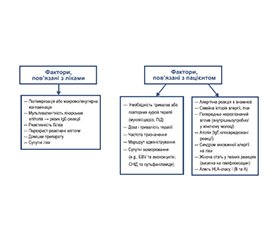Oral and General Health Том 4, №3-4, 2023
Вернуться к номеру
Гострі алергічні реакції в практиці лікаря-стоматолога (огляд літератури)
Авторы: Шарікадзе О., Охотнікова О., Трубка І., Шарікадзе-Балабан А.
Національний університет охорони здоров’я України імені П.Л. Шупика, м. Київ, Україна
Рубрики: Стоматология
Разделы: Справочник специалиста
Версия для печати
У статті поданий огляд сучасної літератури та наявних клінічних рекомендацій щодо проблеми медикаментозної алергії у стоматологічній практиці. Основна увага приділена реакціям гіперчутливості негайного типу з ризиком розвитку анафілаксії. Метою цього огляду є аналіз сучасної літератури для поліпшення інформованості лікарів-стоматологів щодо особливостей таких реакцій та надання конкретних алгоритмів, як діяти під час їх розвитку. Наведені характеристики лікарських засобів, що найчастіше використовуються при наданні стоматологічної допомоги та мають високий алергенний потенціал. Також приділено увагу необхідності ретельного збору анамнезу для пацієнтів із хронічними захворюваннями, які потребують частих хірургічних втручань або використання великої кількості медикаментів, зокрема у пацієнток із синдромом полікістозних яєчників. В огляді наведені сучасні алгоритми менеджменту пацієнтів із реакціями гіперчутливості негайного типу, що пов’язані із стоматологічним лікуванням. Підкреслюється значущість готовності стоматологічної спільноти та конкретної команди надати своєчасну допомогу та наявності необхідного обладнання для боротьби з будь-якими передбачуваними та непередбачуваними побічними реакціями, які виникають у стоматологічному кабінеті.
The article presents a review of modern literature and available clinical guidelines regarding the problem of drug allergy in dental practice. The main attention is paid to the immediate hypersensitivity reactions with the risk of developing anaphylaxis. The purpose of this review is to analyze the current literature to improve the awareness of dentists about the features of such reactions and to provide specific algorithms on how to act during their development. The article describes characteristics of the drugs that are most often used in the dental care and have a high allergenic potential. Also, a special attention is paid to the need of a careful history taking for patients with chronic diseases who require frequent surgical interventions or the use of many medications, in particular, patients with polycystic ovary syndrome. The review provides current algorithms for the management of patients with immediate hypersensitivity reactions associated with dental treatment. The importance of the readiness of the dental community and the specific team to provide timely assistance and the availability of the necessary equipment to deal with any predictable and unpredictable adverse reactions that occur in the dental office is emphasized.
ліки; реакції гіперчутливості; анафілаксія; стоматологічна допомога; синдром полікістозних яєчників
drugs; hypersensitivity reactions; anaphylaxis; dental care; polycystic ovary syndrome

